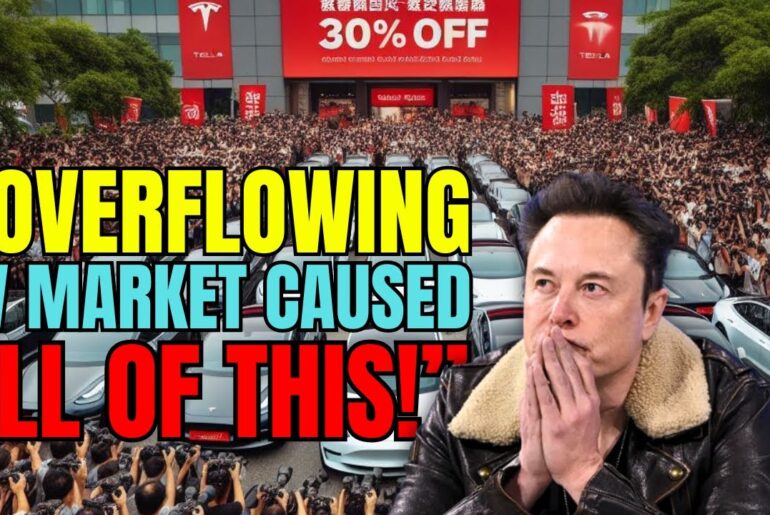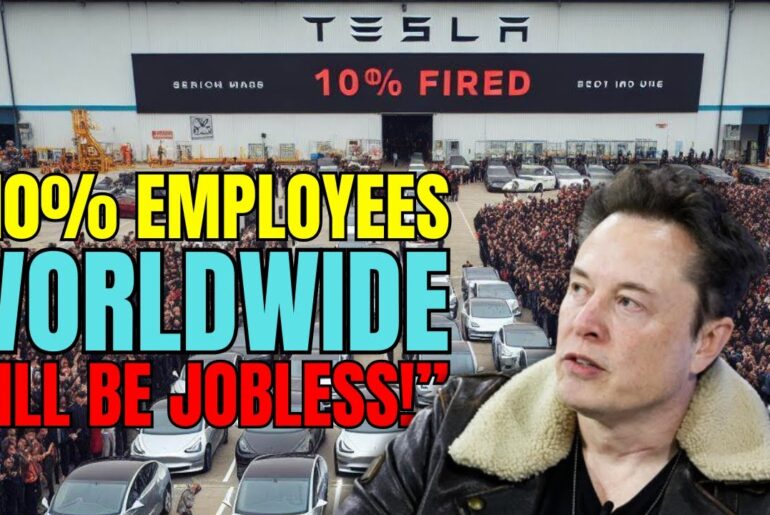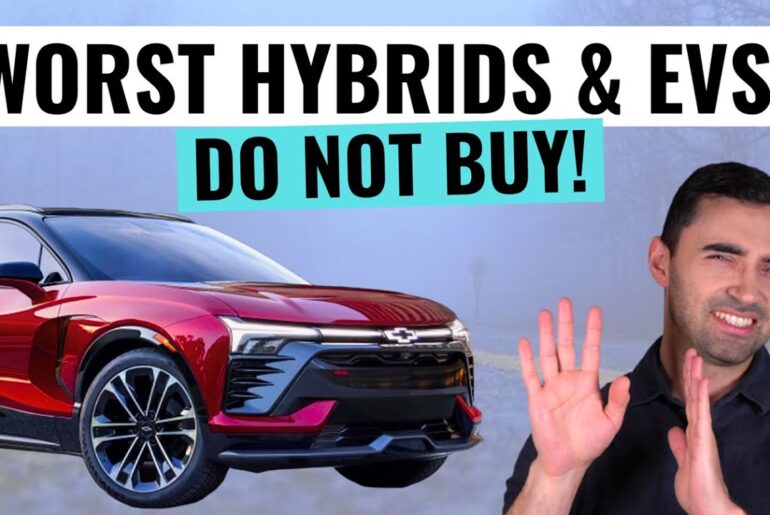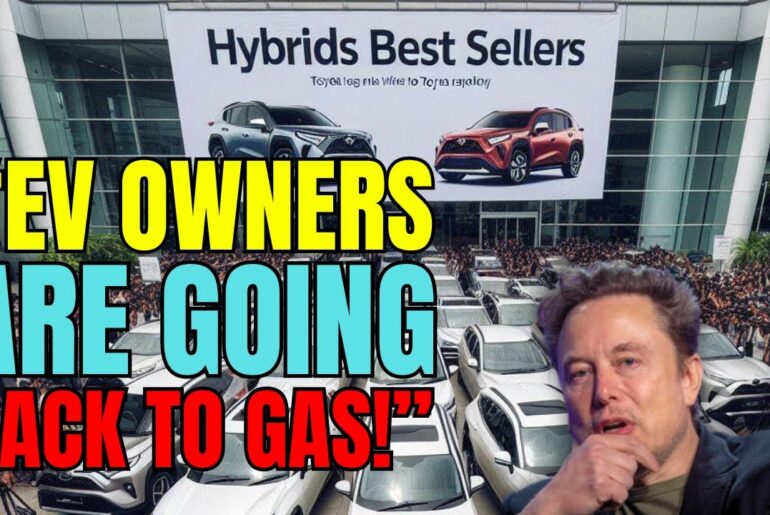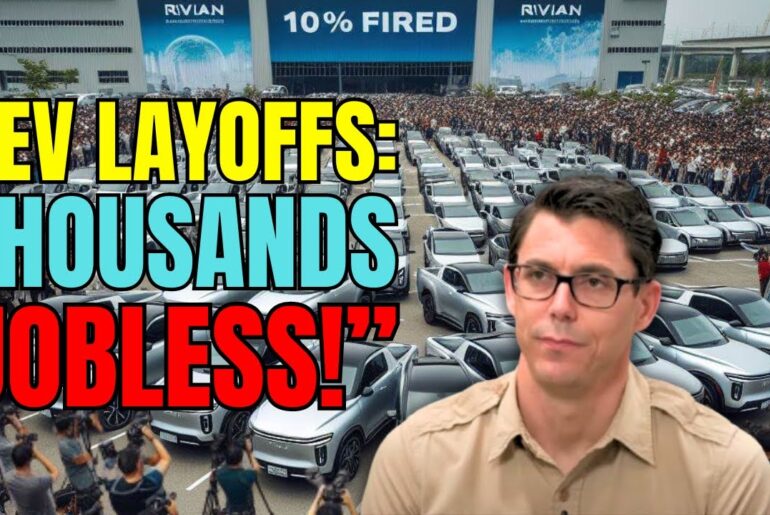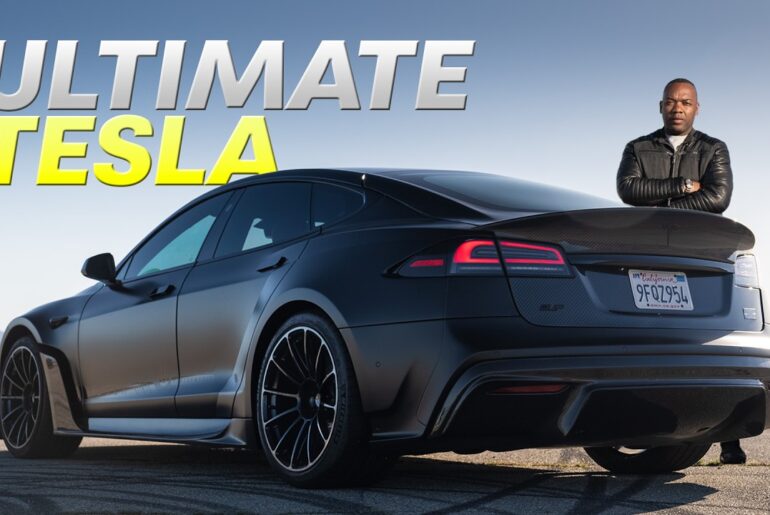I’m Stuck In Traffic In An EV & It’s Freezing! How Long Can The Car Last Before I Run Out Of Charge?
This video is brought to you by star charge the largest EV charging manufacturer in the world they are also a provider of residential and Commercial battery storage with micro grid Solutions this video is also brought to you by chemp power the reliable quick and scalable EV charging solution for
Everyone and everywhere hello and welcome to another out of speec reviews video behind me is an electric car and it is -10 fah or about minus 25° Celsius pretty chilly uh certainly the Minnesota guys are like this is shorts and t-shirt weather but it’s still very cold out
Here and certainly very cold for electric cars now on this channel we cover EVs and combustion cars and compare them and but but we’re not like here to make EVS look good we’re here to just test and then share the results with you and so many people have been
Tagging me it’s been all over the news that well you can’t be in an electric car in cold weather because you’ll run out if you’re stuck on the highway in a traffic jam and to me I go okay well you can run out of either fuel or
Electricity in any car if you idle it for too long so they’re not wrong it is very possible to run an electric car completely dead by running any sort of load on it just like a combustion car the big question is for how long can you
Go in an electric car before it dies if you’re stuck on I70 and the road closes and it’s again -10 fahit outside how long can you go in the winter time that’s what we are going to be attempting to find out in this video I’ll walk you through the testing
Procedures I’ll explain why I chose this Tesla to use the test and then of course we’ll simulate a traffic jam first off why did I choose a Tesla for this test well Teslas are pretty much the most popular electric cars on the road here in America they actually
Have a pretty fairly cool HVAC system as well well using a heat pump uh as well as Scavenging the heat from the battery pack and the motors the car that we’ll be using is a th000 horsepower Tesla Model S plaid not something you’d really think about for winter driving but of
Course I’ve got the Nokian Haka palita R5 winter tires on here so we have plenty of traction we have again all-wheel drive and I would say a pretty good state-of-the-art thermal management system I’ll also at the end of this video give you an impression as to how
Much energy I think you use if you’re in a car without a heat pump and of course some of the electric trucks or even economy cars but Tesla is again very popular model 3 Model y being very popular Vehicles that’s why I’m choosing this one here to simulate this test
Let’s jump inside cuz my hands are about to freeze off and I’m going to simulate a traffic jam let’s do it well guys we are attempting to find out how long you can sit in traffic in an electric car but there’s a few things I need to let
You know right up front uh before we start this test and of course I’ll walk you through how I’ve set up the car for the testing procedures the first is we all know that electric cars charge faster when you’re at the lowest state of charge possible so this is just in
General so when I drive on road trips I’m typically getting to fast Chargers between 2 and 8% state of charge let’s just say now in the winter time when the conditions are bad that’s not enough buffer for even me to feel comfortable especially living here in the Rocky
Mountains knowing that I70 can get closed down for hours on end in frigid temperatures um I always overcharge now that does add to the overall trip time again I’m trying to be realistic here I’m not here to tell you electric cars are better and I would certainly never
Try to convince someone who doesn’t want an EV to buy an EV um for me they’re fun and interesting but I also own combustion cars as well and so um it is important to recognize that travel times will increase in the winter probably not
By much probably on a 5 or 6 hour trip maybe 20 or 25 minutes at the most just to leave a little bit extra in the battery pack and then your consumption will also decrease in the winter because or sorry your consumption will increase your efficiency will decrease um because
You have to warm up the battery on the way to charging stations that’s going to use a little bit more energy as you precondition the car so let’s not let’s be realistic and understand that electric cars consume more in the wintertime so do combustion cars by the way combustion cars consume more the
Thing with a combustion car is you usually have a massive fuel tank and there’s fueling stations that can fuel it up in just a few minutes on every corner where with an electric car we have sort of charging stations that are yeah I would say at least in in Colorado
Maybe 20 or 25 miles maybe 30 miles apart from each other and certainly take a lot longer than a few minutes to charge especially if your battery is cold so that is the first and most important thing to recognized as the start of this test which is we’re going
To be very realistic about the use case of electric car in cold weather secondly the testing procedures uh I have tried to simulate a road trip condition as best as possible I preconditioned my Model S and it melted all the snow off of it sitting in my driveway I had it on
An AC charger I then preconditioned to my local Tesla Supercharger and charged it up so I made sure that the battery was warm after a charging session this is only just a few minutes ago we’re just arriving back and I charged it to about 80% state of charge now the reason
I did that to warm up the batter is because on a road trip you’re going to be hopping charger to charger to charger every few hours along your trip and you’re going to have a warm battery pack so that’s why I’ve warmed up the car in
This case I just think that’s the most representative case of EV road tripping now you can argue that you know you’re on your first leg of your trip and you haven’t warmed up your battery But ultimately that’s not going to add too much to the consumption of this you
Would just if you’re stuck in traffic and your battery is cold my recommendation would be to just turn off battery preconditioning if you really think you’re going to be stuck there for a while so ultimately I don’t think that’s going to play too much of an
Impact and I charged up the car again to 80% we’re down to 74% now the battery pack in this car is roughly 100 kwatt hours usable roughly just under but roughly and what we’re going to do in this test is I’m going to inch my neighborhood simulating against stop
Traffic and moving along for 1 hour exactly and then we can calculate how much energy we use in that 1 hour and multiply it out you know of course to see what would fill up that 100 kilowatt hours now you can interpret that data however you want you can say well I’m
Never going to be stuck in traffic at 100% state of charge which there was no you would never be stuck in traffic at 100% you would have whatever’s left in in your battery and that is the big unknown variable of all of this if you get stuck right before your next
Supercharging stop you may only have 15 or 20% state of charge in your battery pack just like in a gas car if the highway stops just ahead of where you’re going to pull off to fill up your tank you might be down to an eighth of a tank
Or a 16th of a tank so it’s always hard to say EVS can last this long in traffic because you never know when you’re going to hit a highway closure and at what state of dist charge you’re going to be at so just throwing everything out up
Front here what we’re going to do is simulate roughly how much energy 1 hour sitting in stop traffic will be we’ll try not to go above 10 or 15 mil an hour at the very most over a 1H hour period of time and we’re going to basically
Look at everything now in the Tesla itself in order for things to count towards the trip calculation here I actually have to keep the car in drive because if I put it in park I believe uh it does not the HVAC does not count to our total energy so what we’re going
To be doing is uh of course when I come to a stop and make a phone call or a text message or something I’m basically just going to sit in drive and then inch around and it for sure will calculate the energy consumed by the HVAC system
Even if I’m stopped as long as the car is in drive so for 1 hour we’re going to basically be doing this and looking at how much energy we use just inching around so what do you say we start the test car is already warm battery packs already warm again simulating road trip
Conditions I’m at 74% state of charge that really ultimately doesn’t matter and just to show you guys that the battery is warm um again it doesn’t matter because if you turn off conditioning the battery is not using any energy to maintain temperature okay so hold on got to put
It in park to just show you this come on go to park there we go don’t need a software update doesn’t actually change anything for this test climate control back on if I come here to high voltage yep you can see we’re at almost
40° C Max temp 34° c MTM and so yeah batter is not going to be kicking on anything like that uh any any conditioning for the battery pack and again if I was stuck in stop traffic I would disable battery preconditioning to the next Charger just to again conserve
As much energy for the HVAC system as possible I know I hit you with a lot of information that’s how I typically do things I want you to understand it all uh I’ve never done a test like this I genuinely don’t know what the results will be so I’m looking forward to having
An answer for you guys and um all right guys well you just joined me in the car now it’s indicating -6° F although the temperature sensor is right next to the heat pump in this car so this one always reads a bit warmer than ambient it’s actually -10 outside according to uh our
Home weather station and I’m at home so yep okay so here’s what we need to do we are going to simulate 1 hour I’m going to set a stopwatch as soon as I start but I’m going to reset trip a which is called SEMA but that’s the last thing I
Did with this car was I guess drive it to SEMA and so yep let’s reset SEMA and we will hit the road I’ll start the stopwatch and we’ll go well we are all started and we are off right at 9:30 p.m. so as soon as we hit 1030 p.m. we
Will stop I have uh made sure that the uh trip is reset here if I come here to trips boom we are reset on SEMA it does take a little bit to um bump up what should I do for temperature though I feel like it is slightly chilly in here
Again I’m going to run comfortable speeds so I’m going to set it to 72 maybe 72 to 75ish we will run again I have autopilot set at 5 m an hour right now simulating again traffic jam crawling along so my neighbors are going to think I’m crazy crawling along at 5 mph it’s
Actually saying it has poor visibility so it wants to only go 3 m an hour so 2 mph so it’s really simulating a true traffic jam at the moment and if autopilot can only work at 1 mile hour with a fairly clean windshield I I and
I’m not even in autopilot this is just cruise control I’m not really sure how these cars are ever going to be full self-driving but that’s a topic for another day um cool so it should update our energy and wat hour per mile soon I’m expecting it to be I don’t know
Pretty High cuz we’re going slow uh consumption will go high uh because we don’t have a lot of distance to advertise it over so let’s go and uh I’ll keep you updated throughout the test there we’ve just had our first update average energy 477 wat hour per
Mile that’s kind of what I was expecting cruising along like this and maybe even more we’ll see but um yeah we’ll probably come to a stop in certain areas for 3 to 5 minutes at a time and then just inch along like this four or 5 mes an hour simulating again a traffic
Situation just for reference and contacts he is this far away and this traffic sucks you’re doing great I haven’t run out of charge yet oh goodness you keep trucking you got some Tru behind you g there you go there’s the proof and the pudding that he is going this
Slow people passing him left and right that darn Tesla ain’t fast enough okay interesting findings and results we’ve been at it for roughly 13 minutes now I’m actually setting it at 1 M an hour because I feel like this is you know if I’m sitting in stop and go
Traffic pretty representative and wow it’s frustrating and it’s so funny how autopilot is speed Limited at one M hour but I’ve set it to one M hour anyway okay uh trips yeah we’ve only gone one mile we haven’t even used one kilowatt hour and I’ve only lost 1% state of
Charge indicated so I feel like it’s doing way better than I expected at the moment I thought that this thing would just chug the juice but I have to say the heat pump’s going slow and uh yeah things are going well so far I think there’s more to look at
Car is indicating -7° fah it’s pretty chilly and again I I’ve cranked the heat too I was like getting I put it up to 74 I got it on automatic with the high I’m not trying to I’m doing everything wrong I a look at this I even got the
Passenger heated seat on there isn’t even a passenger here I guess I just let I’m you know I’m trying to be pretty consumption heavy and um yep well it’s it hasn’t has has only used 1% indicated and who knows we probably haven’t even used one full percent yet
So Yep this is it we’re just going to keep doing this I feel like this is the most representative and the slower I go the worst our efficiency should be so I’m trying to do this car complete disservice right now I’m doing everything wrong heat cranking it’s
Toasty in here now it’s nice well you joined me cruising along we’ve made it to a whopping 5 miles hour now it is 9:59 p.m. it’s uh8 indicated and let’s take a look at the stats um so far we are down to 32 or 72% state of charge which means we’ve lost two
Indicated and there’s 10 p.m. yep okay so it’s legit and I’ve like been kind of driving in the high snow like this is all bad and we’ve gone 2 miles really going slow so that’s what an average of 4 M an hour and we are using 673 W hour
Per mile which is honestly not terrible considering how slow we’re going and we’ve only used 1 kilowatt hour now what I wish Tesla would show me is 1 point something kilowatt hours but uh certainly as we get close to the end I’m going to see how uh long we sit at the k
Hour so I can gauge if it was a half or uh you know just a small amount or whatever so anyway uh we are being way more efficient than I expected even considering we’re like driving through pretty thick snow this is pretty resistive stuff this isn’t like a dry
Pavement which you would expect a highway to be dry pavement so this is even worse worst case and so far we are barely burning anything so wow call me impressed I did not think it would do this well this is very impressive oh and and I’ve like even put on all the loads
Like the rear window defrost because it was kind of you can tell getting pretty icy back there and I’ve even put on the wiper defrosters which heats up the bottom portion of the glass here so the wipers get melted this is wild guys I just got passed by a freaking
Bicycle what the heck I feel like such an idiot oh we’re about 45 minutes through the test at the moment can’t be over soon enough feel like my neighbors is going to start calling the cops on me for driving around the neighborhood at 1 M an
Hour we are getting close to the finish line here pulling out of a parking lot where I’ve just done 1 mile an hour around this building it is slower than a walking pace and um yeah let’s raise it up to 5 mil hour pull out on the street
With some speed maybe we’ll bump it up a little bit more and and then we’ll come back down to 5 m an hour uh 2 more minutes left in the test so far we are at 71% let’s see what the final numbers look like here all right guys we are at
The end of the test one hour of driving around creeping my neighbors out it has been one heck of an experience there we go 10:30 stop the clock boom we have gone 3 miles 2 kilowatt hours used and 711 W hour per mile for the calculations just because
We’ve been at 2 kilowatt hours forever I’m going to use 3 kilowatt hours because I feel like this has just been so efficient uh it’s just insane so let’s run inside let’s crunch the numbers and I think because I also have some other cars at home I kind of want
To try this with like not a super efficient heat pump heat Scavenging car because what this car can do with an octo valve is because I started with a warm battery it actually can take some of the the builtup thermal inertia or thermal mass of the battery pack and transfer it
Into the cabin by way of heat Scavenging is what it’s called what I want to know is worst case scenario on a non-heat pump car this would be a resistive heater um and starting with a stone cold battery pack that guy did not stop at
The stop sign um yeah I want to see how that car does so maybe I’ll pull out the old model 3 this person’s trying to stop at the stop sign didn’t quite make it though yeah people are crazy drivers out here um yeah I almost see a bunch of
Accidents here but now we can open this thing up full sand woo full brakes um yeah let’s take out the old model 3 see how that does from a cold soak worst case scenario that’s absolute Frozen battery everything let’s see this was best case scenario let’s see worst case scenario
Good morning it is still below zero outside and we are running the next test which is pretty much the same thing we did except we’re starting with a frozen ice brick of a car this thing is sat outside unplugged completely covered in ice and snow for the last two days and
You know got down to below5 last night after we were shooting so this is a frozen brick it’s also an older Tesla with older heating technology that uses a uh resistive heater now some cars like our Audi rron here the this thing will actually use a resistive heater or a
Heat pump or both depending on when it’s most efficient although you guys know Audi is not very good at efficiency so anyway then you have vehicles like my rivan that just have a resistive heater sort of like the model 3 so what we’re
Going to do is as soon as I get in the car we’ll put it right in the drive reset the trip computer and just drive uh I’m going to brush some of the snow off and then we are going to to do sort of a worst case scenario older
Technology I’m sure we’re going to burn a lot more energy than we did when we took the model S all the way down there out before so uh yeah let’s do this thing okay well I think that’ll be good enough for this test it’s not like we’re
Going fast or blowing snow all over the road so in we go oh boy it sounds a little crunchy in here it still shows -4 oh boy okay so we’re going to run all the loads on this thing again since we did it sort of night time wow you can
Even see the screen refresh is pretty pretty slow here okay let’s turn down the audio so we have lights on we’re going to rip the heater I’m not going to go to high but I’ll go one down from High um let’s put it in drive there we go I’ve never seen a
Screen like get so cold it’s going slow let’s um reset this one Midwest whatever and it’s 850 so at 9:50 a.m. we can end the test you can see severely limited performance of the batter battery pack of course it’s not going to allow much regen and not discharge because this is
A cold Frozen battery it’s still drivable you could still probably maintain highway speeds with it it’s not like it’s uh anything super crazy but um the thing with lithium is if it’s below freezing it will not o wipers come on come on well anyway we’re going we got
An inch around um the sun will melt it um the thing is batteries will not charge unless uh they are above freezing with nmc chemistry which this is wow the dampers are so stiff on this thing so we’re just going to cruise around again 5 mil an hour or so something like this
The heated seats already ripping which is great can’t see a damn thing I figured I could just wipe off with the windshield wipers but the wipers are frozen Mission successful we have the wipers crunchy but unstuck and yes so we’re just cruising 7 m hour under 10 I
Think I was going a little bit slower last night for some reason the other Tesla let me use uh autopilot but here it’s not available uh both cars have the old radar system that is pretty much disabled now anyway uh I got to jump on some conference calls so I’m doing this
While I do some work I’ll check in with you guys towards the end of the test but we’re just going to go anywhere between 1 and 7 miles an hour maybe we’ll hit 10 if we’re feeling really spicy but the cabin’s heating up really quick that is
The benefit of an electric car it’s just almost instant heat love that well good news everyone we’re just creeping along here between you know 4 M hour in the parking lot we can simulate you know sort of a stop situation for a moment I kind of just trying to keep it the same
As I did last night and you can see uh cruise control is working now everything is looking good no like low speed warning like we were seeing in the model S and uh we only have about uh 19 minutes left to go just finished up on some calls so that worked out perfectly
I’ll let you know what the results are here momentarily with our starting point in sight it is 9:49 a.m. that was perfect timing I’ve just been inching around so we have to wait for 950 a.m. and then we can there we go 950 a.m. okay wow 8 kilowatt hours
I think I went just slightly farther than the other one um but okay a lot more energy used here as expected but still not as much as I would have thought that’s really not so bad and this was absolute worst case scenario so let’s crunch the numbers I’ll give you
Some results that you guys might be able to use and we’ve done the test I’ve been so curious about this for years and I’m glad it only took me two hours to answer my own questions by the way anyone could have done this it didn’t have to be me
But um I guess you guys watch the channel so I’m happy to waste two hours of my life for yall all right back in the driveway well guys some numbers in the model S we used indicated 2 kwatt hours but it stayed there for a while so
I’m saying 3 kilowatt hours and on that vehicle we had what I would consider to be a representative of a road trip condition which would be you’ve just supercharged you go down the highway oh no it’s stopped thankfully your battery already has a lot of thermal inertia it
Can heat scavenge it has heat pump technology which is much more efficient than resistive heating even in cold temperatures Believe It or Not Tesla’s heat pump technology is pretty amazing and um that is representative of what I would say is most electric cars on the road today pretty much since 20201 was
It uh every model 3 y s and X has you know heat pump technology so many other EVS even Beyond these like I like again our rron has heat pump tech that works out pretty well now it was really interesting doing it with our old model
3 here because I went to the extreme worst case scenario which is a resistive heater car with a stone cold battery pack and instantly starting the test and what the car had to do was not only heat up the cabin to keep me warm it also had
To heat up the battery so that I can out output more power and I would say it didn’t heat up the battery all the way to the hottest position uh of course it just heated it up enough where it could be usable in a situation uh where you
Can you know get up to highway speeds and have some of that great electric car acceleration so it just heated it up probably to freezing or just about and what I noticed during the test in this model 3 was a huge energy spend as soon as we started I mean really ripping the
Energy the bearings were cold everything and then after about 20 minutes I would say the consumption really leveled off I wouldn’t say it matched the model S but it was close all in all we used 8 kilowatt hours with this particular test so best case scenario and worst case
Scenario we’re talking 3 kilowatt hours to 8 kilowatt hours in a 1H hour period of time so how long can you go if you’re stuck in traffic well let’s just say best case scenario you’re at a 100% state of charge in a Model S or a car
With a 100 KW hour pack in a Model S you can go over 30 3 hours roughly a day and a half of sitting in traffic in you know minus 10° fah temperatures that’s pretty damn good uh and let’s say you had uh the consumption of this car even though
Again we had that big spend and then it leveled off let’s just assume you always have Max loads on well you’d still get over 12 hours in a 100 KW hour pack car now again every battery has different capacity the maximum capacity of our model 3 is about 68 Kow hours after some
Degradation has 150,000 mil on it knew it was like SE low 70 so it’s lost a few percent and um you know may maybe in this car I would only get uh eight hours something like that uh but but then again if after that big initial spend
And it just relaxes and the battery stays at a reasonable temperature the cabin stays at a reasonable temperature I still bet you could get almost 12 to 24 hours out of this one in a similar situation on a full charge like I mentioned at the beginning of this video
You never know when the road’s just going to close if there’s an accident in front of you and you’re stuck so always overcharge always overfill in adverse weather conditions because you just don’t know and I would say always leave about 10 to 20% extra in really extreme conditions because then you’re
Guaranteed at least many hours of sitting on the highway and I hope this helped answer some questions it was really interesting to me do what you want with the data you can create your own situation and I think we’ve showed a great best and worst case of course this
Car would have done even better if we set it in the same conditions as the model S it may have only used four kilowatt hours instead of three um you know who knows but there’s your best and worst case scenario of oh no it’s freezing the road’s closed how long can
I sit in traffic the answer is we don’t know because we never know what state of charge you’re going to be starting at hope this helps demystify some things thanks for watching you on another one again soon bye-bye
Kyle finds out how long you can sit inching through stop and go traffic in an EV during extreme cold temperatures. We performed 2 tests, one simulating a road trip after a charging session with a Tesla Model S and another with a stone cold Model 3. Enjoy!
Shoutout to our sponsors for more information find their links below:
– Star Charge:
https://www.starcharge.com/charging?id=20
– Kempower:
We would really appreciate it if you subscribe to our channel! The more subscribers we have, the more awesome opportunities we will be able to bring to you!
Find all of our Amazon must-haves here:
https://www.amazon.com/shop/influencer-3317696d
Kyle on Twitter: @itskyleconner
Kyle on Instagram: @Virtualkyle
For more behind the scenes content:
Twitter: @Out_of_Spec
Facebook: https://www.facebook.com/outofspecreviews
Instagram: @OutofSpecReviews
Inquiries: info@outofspecstudios.com
Tesla Referral Code: https://www.tesla.com/referral/kyle92049
TeslaFI Referral: https://www.teslafi.com/signup.php?referred=kconner5
0:00 – Hello & Welcome
1:48 – Why Use Tesla For This Test
2:50 – Cold Weather EV Info / Testing Procedure
9:40 – Road Trip Simulation Model S Test
18:58 – Frozen Model 3 Simulation Test
23:42 – Final Thoughts / Results
If you liked this video, we recommend checking out some of our other channels!
Out of Spec Motoring: http://youtube.com/outofspecmotoring
Out of Spec Reviews: https://www.youtube.com/outofspecreviews
#Tesla #cold #ev

